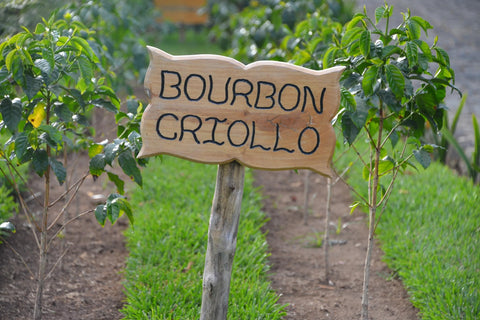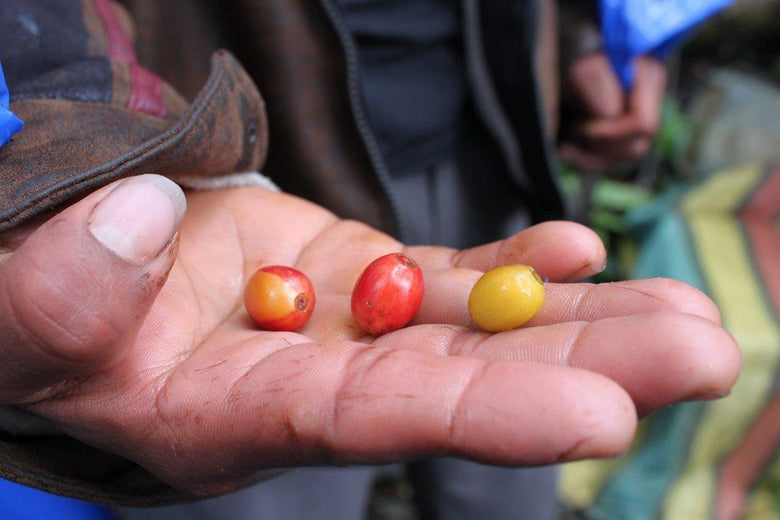Have you seen these words?
- SL28
- Typica
- Geisha
No, these aren’t weird names from sci-fi novels. They’re coffee plant varieties, the genetic classification that falls beneath species.
You’re likely to see them on coffee bags or cafe menus, but most baristas and roasters won’t explain them unless you ask. So, I understand that they can be a little confusing.
I’ll break these varieties down for you, tell you about the most common ones, and tell you why they even matter in the first place.
Let’s dig in.
Does This Really Matter?
Well, to be honest, varieties typically don’t mean much to regular coffee lovers.
Most arabica varieties taste very similar, but there are a few that really stand out, like the rare, high-dollar geisha variety. If you see one of those on the menu, try it. You’re in for a treat.
Read: Here's Why Some Coffees Are Very Expensive
However, yes, varieties are extremely important on the global landscape. Some produce great yields, some have unique flavors, and some grow better in certain climates.
Variety research saved coffee production in South/Central America in the 80’s and 90’s when the disease “leaf rust” was destroying farms by the hundreds. And new research is saving coffee production in Africa today as droughts get longer and more intense.
Varieties are the key to the survival of coffee as we know it.
Variety, Varietal, Or Cultivar?
Okay. Wait.
Before we go any further, we’ve got to dispel a point of confusion.
Some companies say coffee variety, some say varietal, and some say cultivar. What’s going on? Are they different? Let’s make this as simple as possible.
A variety is the plant classification that falls beneath species. It’s how you identify the genetic makeup of a specific plant.
The varietal is how you would identify a product of a variety. For example, a wine made from merlot variety grapes is considered a varietal wine. It’s not a merlot varietal. It’s a varietal wine because it’s made from a single grape variety.
Yeah, it confuses me too sometimes.
Read: How To Read Coffee Packaging Like A Pro
If you’re a botanist, you reserve the word variety for wild plants and use the word cultivar for crops created by human activity, such as plant breeding.
So, varietal is always incorrect when you’re talking about coffee beans. Cultivar is correct if you’re speaking to a botanist. But the rest of us mainly use variety.
Where Do Varieties Come From?
Coffee varieties are created in a variety of ways.
The original varieties were formed naturally in the wild through ancient mutations, just like all other plants.
Out of modern varieties, some plants mutated on their own, creating new varieties. Some of the plants cross-pollinated in the wild to create hybrids. And some plants are cultivated in labs until the right varieties are formed to meet certain criteria, such as disease resistance, yield, or flavor.
Read: The Golden Ratios in Coffee Brewing
Common Coffee Varieties
Almost all arabica coffee varieties we know and love stem from two original varieties: Typica and Bourbon. These two are at the top of the family tree.
Typica coffee plants tend to produce excellent tasting coffee, but the yield is on the low side. Bourbon (burr-bone) plants generally produce 20-30% more coffee than Typica, but the cherries are at greater risk of falling off the trees in harsh weather.

An Example Coffee Family Tree
The Caturra variety is a natural mutation from bourbon that was discovered in Brazil in 1937. It requires extensive care, but rewards the farmer with a large yield and great flavor. It also produces mature cherries faster than most other varieties.
Mundo Novo is a natural hybrid of typica and bourbon that was also discovered in Brazil in the 1940’s. The cherries mature slowly, but production is high and the flavors are of especially high quality at upper altitudes.
In the late 1950’s in Brazil, scientists selectively bred the Catuai variety, a hybrid of Mundo Novo and Caturra. These plants take some of the best attributes of the parent varieties. They’re short and durable, mature more quickly than average, and produce richly flavorful beans.
Read: The Easy Guide To Coffee Bean Storage
As you can see in this basic family tree, variety family trees can get complicated very quickly. I won’t go on forever down the variety families, but I will touch on some of the most important varieties in modern coffee.
Other Modern Coffee Varieties
Scott Labs in Kenya was on a mission to find a drought and disease resistant variety to help farmers through difficult times they foresaw. They created three now-beloved varieties.
SL28 was an accident. Though these plants aren’t any more durable or resistant than the original control variety, the cup quality is far more incredible. SL34 is exceptionally resistant to disease and drought. And SL14 has a particularly quick maturation, which is great for farmers who need to transition varieties without losing too many years in profits.
Timor was discovered in Indonesia in the 1940’s. Researchers discovered that it was a natural hybrid between arabica and robusta species. Though it’s technically a different species, we still consider it a variety (though I’m not really sure why). It’s well adapted to resist leaf rust disease.
Read: How To Taste Coffee Bitterness
Coffee scientists in Portugal in the 1950’s wanted to combine the yield and flavor of Caturra and the disease resistance of Timor. Through selective breeding, they created the Catimor variety. Though it often has a bitter flavor from its robusta heritage, it can also produce particularly floral coffee when grown in near-perfect conditions.
There are thousands of coffee varieties hidden in the natural forests of Ethiopia. As the birthplace of coffee, the country has the most biodiversity among coffee plants. There are so many of these varieties, that when a farm sells coffee from a plant that hasn’t been formally identified, we just call it an Heirloom Variety. Who knows where these fall on the family trees?
The world famous Geisha coffee variety was discovered on a farm in Panama in the early 2000’s, though it was later discovered to be native to the Gesha Forest in Ethiopia. It has a crisp, exotic acidity and floral character, earning the love of the global coffee industry.
Read: Skip The Coffee Aisle, Here's How To Find The World's Best Coffee
This poster I created for the coffee shop I used to manage displays how complicated coffee plant genetics can get.

---
In the end, I wouldn’t worry too much about which variety of coffee you’re buying. If it’s being sold by an esteemed specialty coffee company, it’s going to be delicious.
However, keep an eye out for those rare and exceptionally tasty varieties, like Geisha. You may have to fork up a few extra dollars for them, but they’ll be worth it.


